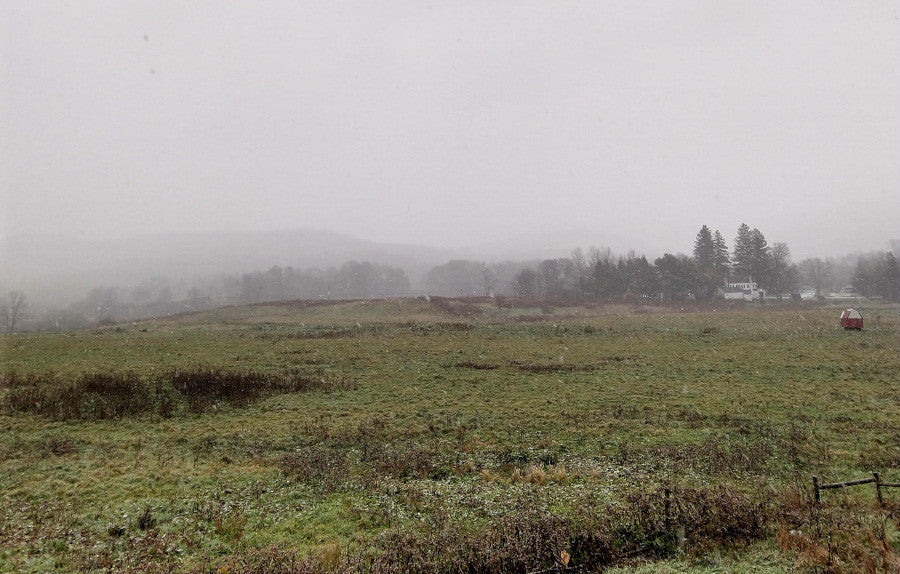Walmart would have you believe that it is all in on sustainable agriculture. It’s already the largest seller of organic groceries in the country, and it generously supports research into less environmentally damaging farming methods. It has publicly committed to becoming a “regenerative company.” Exactly what this means for the food system is far from clear.
The details of the complex tensions between Walmart’s stated goals and the realities of its lowest-cost-possible approach to retail are described at length in this excellent article from Civil Eats. I won’t go through it point by point, but will instead focus on what to me is the fundamental issue.
A short backstory will get us there. During the peak of the pandemic, when the large meatpackers were struggling to stay open as their workforce fell ill, there was a moment of real fear about the food system breaking down. Because slaughterhouses were the weakest link, the main focus was on the possibility of building more of them at a smaller scale. Reversing decades of consolidation would make it so any single plant could be shut down without causing shortages in the national supply of meat.
What I found interesting about the discussion that took place between farmers was that no one could quite agree what ‘small’ should mean; the smallest wanted tiny butcher shops sized for one or two animals at a time, farmers like me wished to see small businesses employing ten to fifty people and capable of doing more volume, while western ranchers imagined plants processing 500 cows per day instead of the 5000 the megapackers currently do.
In other words, basically all of us agreed the the current system benefits Cargill rather than producers or consumers, but in imagining an alternative we all instinctively advocated for the scale that would most benefit our own farms. You might say this sort of reflexive self-interest is only human, which it undeniably is, but the fact that so many of us could agree about the problem but disagree in apparent good faith about the best solution points to the difficulty of defining just what a healthy agricultural system should look like. Unlike conversations about crop subsidies or tariffs, in which dissembling is the norm, I think those of us discussing the proper size for slaughterhouses were being honest, and we honestly saw things differently from each other.
The point is that, while scale is clearly at the root of many problems in farming, it’s extremely difficult to know where to draw the line. How many acres can one person farm without neglecting the land or destroying the social fabric of rural communities? How many chickens should live in a single shelter? If milking 200 cows is fine, why isn’t it okay to milk 400? Can a 10,000 acre crop farm be regenerative? Can a 30,000 cow be organic?
Walmart, in its quest for sustainability operates quite differently; the only thing that matters is compliance with written standards. So if that 10,000 acre crop farm uses cover crops, then it’s regenerative, and if that 30,000 cow dairy can figure out how to follow all the regulations, then it’s organic.
On one level this is completely reasonable. I’ve written blog posts pushing back on the misleading use of phrases like ‘Beyond Organic’ and ‘Regenerative’ and ‘Grass Fed’ by farmers who I am otherwise aligned with. To be more than comforting lies, such words must signify something, and that something must be concrete. They must signify adherence to a standard that substantially differs from conventional farming. But the problem with a purely legalistic approach to defining these terms is that it leaves no room for the spirit of the thing, specifically the sense that in farming there is always such a thing as too big.
My fear is that exactly what qualifies as oversized may be impossible to encode in any broad standard; the appropriate scale for a ranch in Wyoming, a dairy in Missouri, a diversified farm in central New York, and a veggie operation on Long Island will all be different, especially if having them integrated into a healthy local economy is the goal. Besides its other advantages, Walmart has no need to dwell on such ambiguous, situational considerations. The biggest, most efficient, and cheapest is the best, so long as no explicit rules are violated.
I suppose the letter of the law is better than no law at all, but I think we should be aiming for more.


1 comment
Do you think that the big banks requiring/evaluating ESG scores are pushing companies to adopt “sustainability/regenerative” etc in order to get money? Do you think UN Agenda 2030 is pushing companies into this? Enjoying your blog.